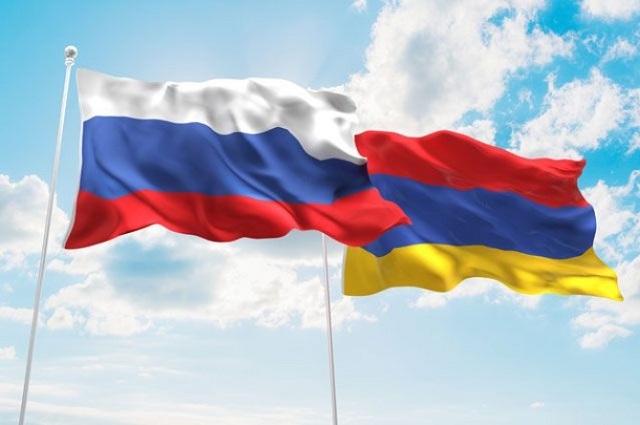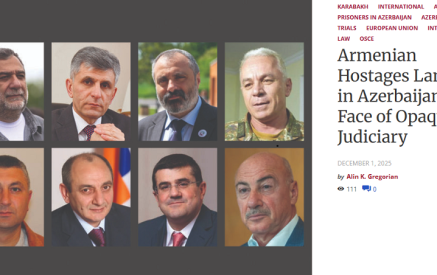BY JIRAIR TUTUNJIAN
News from three states—Azerbaijan, Turkey, and Russia—is a permanent preoccupation of Armenians. Turkey/Azerbaijan threatens Armenia while Russia is seen by many Armenians as the guarantor of Armenia’s security. While the Turkic pair’s intentions is clear, there is doubt about Russia’s commitment to Armenia’s security, especially since Putin and Erdogan are too close for comfort and Putin’s relations with Pashinyan are frigid. There’s no doubt Moscow media doyenne Margarita Simonyan’s July tweet reflected Putin’s displeasure with Armenia.
More than 300 years ago Armenians made representations to Russia asking the tsars to send their armies south and drive out the Turks and Persians from Eastern Armenia. Russians took their sweet time (1820s) to drive away the trespassers. Armenians welcomed the Russian army, which had Armenian soldiers in its ranks but soon discovered Russia, was Turkey lite. Tsar Nicholas I considered Armenia a Russian oblast. Of the four tsars from 1821-1917 only Alexander II was relatively well disposed towards Armenians. For nearly a century Russia treated Armenia as a colony. The Soviet attitude was no different. Now Vladimir Putin wants to treat Armenia as a colony.
Read also
To understand the Russian stance towards Armenia, it’s useful to recall a quote from the late 19th century. When Armenians were being massacred by Sultan Abdul Hamid II, Foreign Minister Alexei Lobanov-Rostrovsky said Russia preferred “Armenia without Armenians.” Other Russian officials demonstrated a similar inclination. During the massacres Russia also blocked the possibility of intervention on behalf of the Ottoman Armenians.
In “Shattering Empires” historian Michael A. Reynolds wrote: “…the educated members of Russia’s Armenian community had begun to chafe under tsarist rule in the latter half of the nineteenth century.” To head off Armenian political revival, in 1903 the tsarist regime initiated a program to Russify the tsar’s Armenian subjects. Among other measures, Russia wrested control of Armenian schools from the Armenian Church, expropriated Church properties, and imposed Russian-style curricula.”
While Armenians were suffering under Ottoman misrule, tsarist officials believed the annexation of the Six Villayets would bring together Armenians under Russian aegis and encourage Armenian revolutionary movements to concentrate their energies on their struggle against Russia. At the time (1909) up to 4,000 Armenians were languishing in Russian prisons on political charges, and some 3,000 more were in exile.
In 1909, when the Turks massacred 30,000 Adana Armenians, Tsar Nicholas II wanted to stop in Constantinople on his way to Rome for a tete-a-tete with the sultan. The plan was cancelled when he was reminded that Constantinople was the centre of the captive Orthodox Church.
During WWI, the Russian army occupied parts of Western Armenia with the help of Armenian volunteer units in addition to Armenian regulars. Soon after, the Russians disbanded the Armenian volunteer units and Gen. Nikola Yudenich, who led the Russian army in the area, proposed to repopulate the Armenian areas with Russian peasants and Cossacks.
Russian mischief continued under the Soviets. Armenia lost Nakhichevan, Artsakh, Kars, and Ardahan so that the Soviets (Lenin and Stalin) could lubricate their relationship with Mustapha Kemal.
After suffering the second-highest per capita casualties among Soviet states in WWII, Armenia’s population sharply declined. Because of it reduced population Armenia should be demoted to the status of autonomous republic, said Stalin. Armenians were to be “punished” for dying for the Soviet Union.
A few years ago, Putin introduced an “open door” immigration program to attract immigrants from the former Soviet states. An unknown number of Armenians have headed north to Russia. Armenian commentators have said the program will accelerate the depopulation of Armenia. Some of these migrants send money to Armenia but overall Putin’s program is a negative for Armenia.
Putin is no fan of the Velvet Revolutions or of Pashinyan. He doesn’t appreciate Armenia’s “persecution” of his fellow big-game hunter Robert Kocharyan whose presidency was marked by corruption, abuse of power, and the killing of 10 protesters in March 2008.
If the Turkbeijan pair attack us, we can’t rely on the moribund EU or the pro-Turkey U.S. Russia is the only game in town. The question is: “Would Russia allow us to have an independent foreign policy while enjoying Russia’s protection?”
While we need Russia more than it needs us, Armenians should not underestimate Armenia’s importance to Russia. If Turkey occupies Armenia, Ankara will cut off Russia from Iran and succeed in his dream of building a Turkic wall (from Istanbul to China) on Russia’s southern tier.
In September, Armenian Ambassador Arman Navasardyan said: “South Caucasus is the Russian sphere of influence, so the Russians are not likely to ever abandon [the region]. Moreover, if Russia loses Armenia as an ally, it will lose the entire Caucasus, paving the way for the repetition of the Ukrainian scenario, i.e. separatist sentiments and a militarized atmosphere. What we need to convey to the Russian elite the clear understanding that the Russian presence is in their interests in the first place and only then in ours.” Well put.
Every Armenian—in Armenia and in the Diaspora—knows that without Russia’s military protection, Armenia would fall prey to the Turkbeijan pair which threatened Armenians with genocide just two months ago.
—Although Armenia recognizes that it lies in Russia’s sphere of influence, the Kremlin should not expect Armenia to forever say “Da” to every Kremlin whim.
—Moscow should not act like a jealous husband who assumes his wife is having an affair just because she laughed at the joke of a man other than her husband.
—Russians should be reminded by Armenia and Armenians in Russia that for centuries Armenians have contributed to Russia’s defense and its heritage. Russians should be reminded that Armenians always punch above their weight. Russians should note that Armenia is more than just Armenia. Armenia is a global “state” with organized, powerful, and committed satellite communities everywhere. We are more than 4,200-years-old but there’s still plenty of life in the descendants of Haig, Dikran, Vartan, Melisende, the Khamsah Meliks, Generalissimo Suvorov, Apovyan, Gomidas, Antranig, Paghramyan, Babajanyan, Hampartsoumyan, Lord Tarzi, Aznavour, Anastas and Ardem Mikoyan, Manoogian, Aram Khachaturian, Kerkorian, Kardashian…





















































